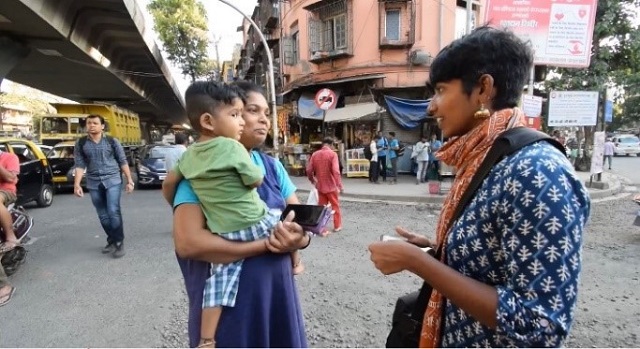
Intersections are among the most high-risk locations along any urban road, where multiple transport modes and commuters collide. In Mumbai, intersections cover only a fraction of the 2,000-kilometer road network but account for nearly 40% of all high-risk zones. Mumbai’s crash data for 2018-2020 shows that out of 1,214 fatal road crashes, almost one third occurred at intersections. Pedestrians are the most vulnerable to road traffic crashes, accounting for 47% of crash deaths in 2019. Unsafe pedestrian infrastructure, especially at intersections near mass transit stations with higher pedestrian volume, is a major factor.
Making India’s cities safer for travel of all kinds is essential to public health and human development, but also a sustainable future. Walking and cycling are among the healthiest and most sustainable ways to get around – but not if they’re too dangerous.
As part of the Bloomberg Initiative for Global Road Safety, WRI India has been working with Brihanmumbai Municipal Corporation (BMC), the governing civic body for the city of Mumbai, since 2016 to redesign high-risk intersections in the city. The BMC identified Lalbaug Junction, in the Parel area of the city, as high-risk in 2019. In March 2020, WRI India began focusing on this intersection to help increase safety for all users.
A Participatory and Holistic Improvement Strategy
Lalbaug Junction is a three-arm intersection of a major north-south arterial road. Its proximity to Chinchpokli train station makes it an important spot for local commuters. The Lalbaug market, another popular pedestrian destination, is also located at the intersection, as well as Lalbaugcha Raja, which attracts an annual pilgrimage. Combined with dense, mixed-use development in the area, the result is nearly 3,500 pedestrian footfalls an hour during peak times.
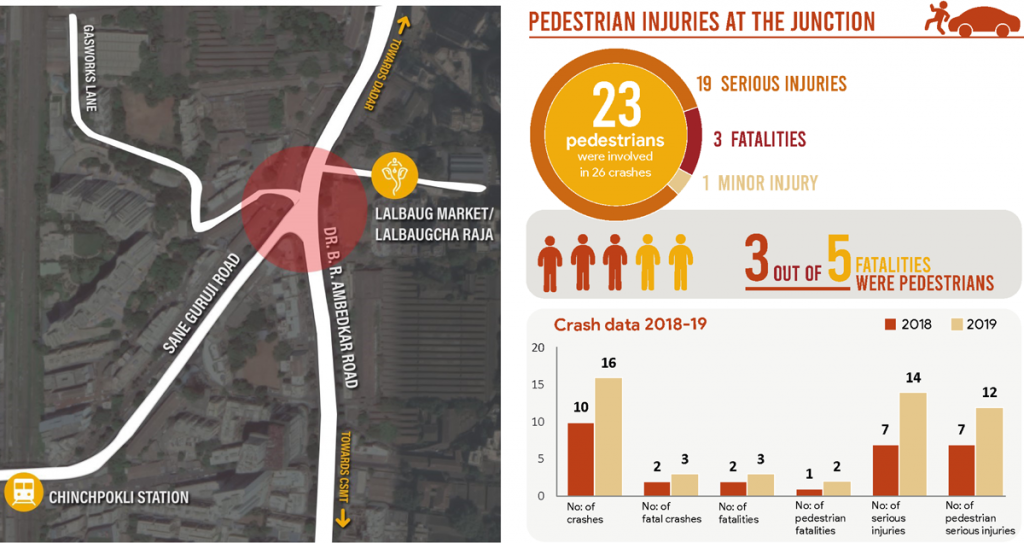
An analysis of crashes reported in 2018-19 revealed that within 500 meters of the junction, 23 of 26 total crashes involved pedestrians and there were 21 serious injuries and five fatalities. Among these, three victims were pedestrians.
The main issues at the junction that made conditions dangerous were a lack of defined markers for vehicles and pedestrians, leading to speeding vehicles; higher turning speeds; long crossing distances for pedestrians; and unsafe pedestrian infrastructure which left people stranded in the middle of the junction at times, while exposed to moving traffic.
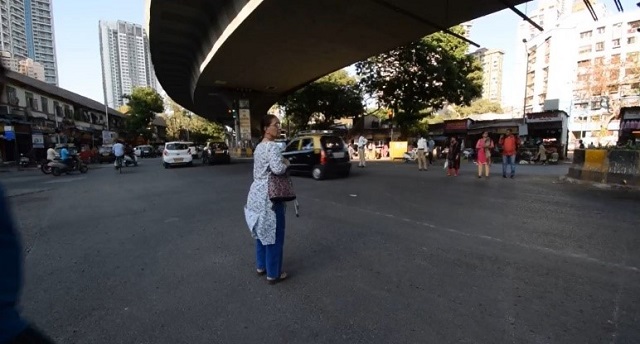
WRI proposed making the junction more compact by re-aligning traffic lanes and reclaiming unused road space to tighten turning radii, reducing speeds while also channelizing vehicular movement. Protected pedestrian crossings and allocated refuge areas were also incorporated into the proposal to make it safer for vulnerable users like children, the elderly and wheelchair users to access the market or Chinchpokli station.
Critically, the WRI team carried out in-depth engagements with local officials, police and residents and worked to address their suggestions and concerns before implementation. Involving multiple stakeholders from the start allowed such a complex project to move faster than it would otherwise.
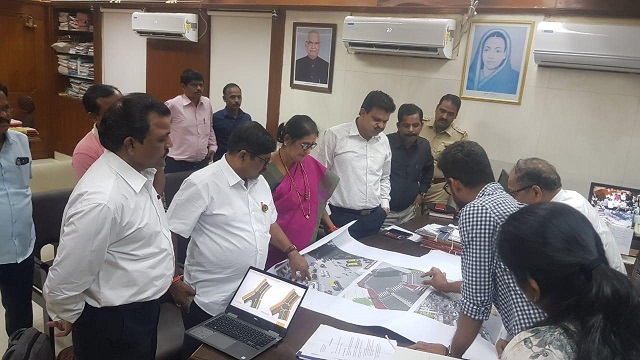
This engagement also led to changes in design. “I cross this junction daily to pick up my child from school,” one street user said. “Because the junction is so large and vehicles come in from every side, I find it difficult to cross with two small children.” It was also suggested that the pedestrian refuge island be removable to accommodate the annual needs of the Lalbaugcha Raja Ganeshotsav festival when the area transforms overnight into a pedestrian priority zone for thousands of devotees. The protected pedestrian crossings with median refuges and a removable pedestrian refuge proposed by the WRI team were response to this feedback.
When introducing and reinforcing road safety measures at such multi-purpose intersections, it’s important to consider the specific socio-cultural needs of the neighborhood and its many users. WRI’s participatory approach to this process helped to create a design recommendation that was not only safe and inclusive but also responsive to the ethos of the place.
Implementation and Impact
Quick implementation of temporary measures is an effective way to demonstrate the impact of the design recommendations and observe how users respond to them in real time. In the case of Lalbaug Junction, the introduction of a pedestrian island and median extension on Sane Guruji Marg was critical in enhancing pedestrian safety and streamlining traffic movements.
A temporary installation of this design in April 2020, using traffic barricades, successfully reduced turning speeds at the junction, by 55%. Drivers and walkers also followed simple chalk lines to guide movements. This helped demonstrate to local authorities that simple pedestrian-oriented design interventions can save lives and drastically improve one’s experience on the street.
The BMC Roads and Traffic department started permanently implementing WRI’s recommendations in May 2020 and has currently completed 70% of construction. The WRI team has continued to support implementation, including with a preliminary analysis of the impact of the changes. The total intersection area has been reduced by 42%, and pedestrian crossing distanceby26%, which helps reduce speeds and make crossings safer.
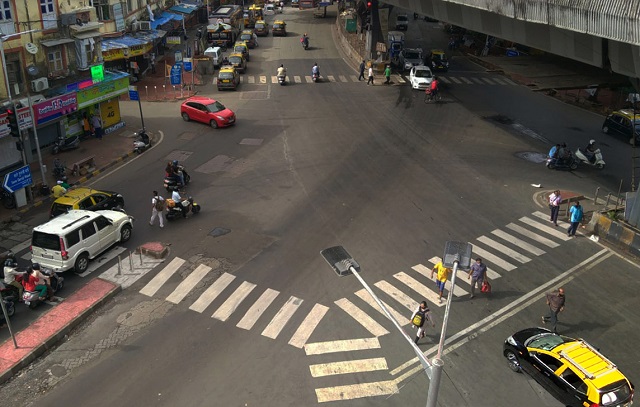
Median refuges with bollards now also provide safe space for pedestrians to wait while navigating the junction, and a walkable footpath with a curb extension and pedestrian ramp have improved the accessibility of the junction.
While five crashes were reported at the Lalbaug Junction in 2020, there were zero pedestrian fatalities. This reduction in crash severity is a testament to how quick, low-cost changes can be instrumental in saving lives.
As Mumbai looks to change its approach to designing streets and intersections, as announced during the Mumbai Street Lab in September 2019, a participatory planning process for urban transformation that puts people at the heart of planning is key to moving forward.
Rohit Tak is a Manager for Urban Transport and Road Safety at WRI India Ross Center for Sustainable Cities.
Lekshmy Hirandas is a Project Associate at WRI India Ross Center for Sustainable Cities.








